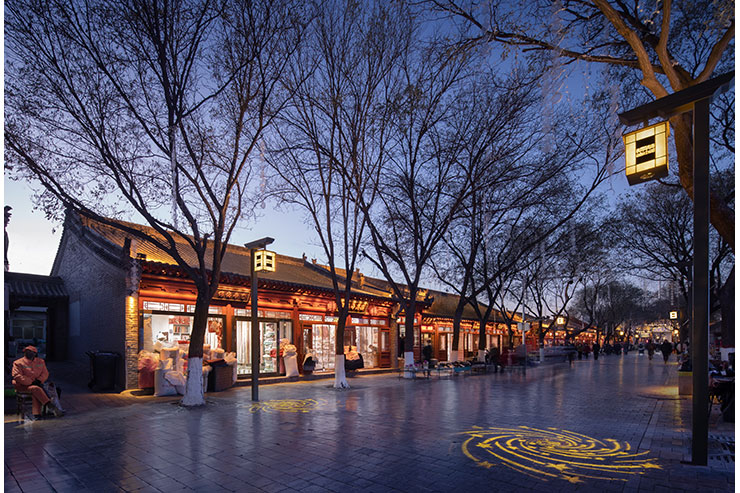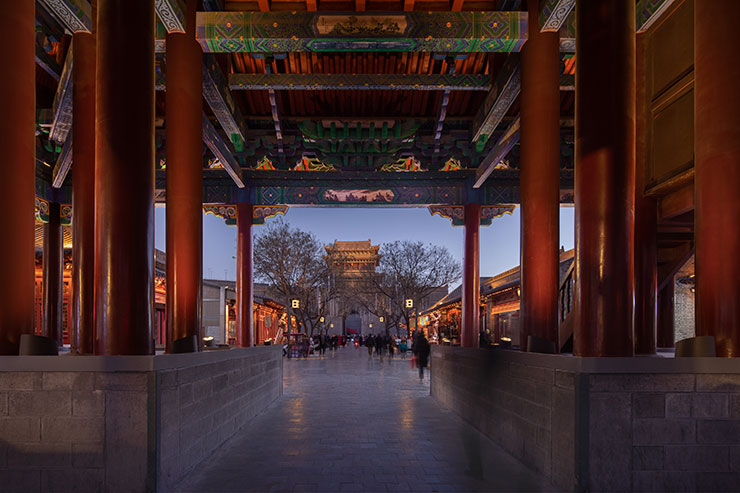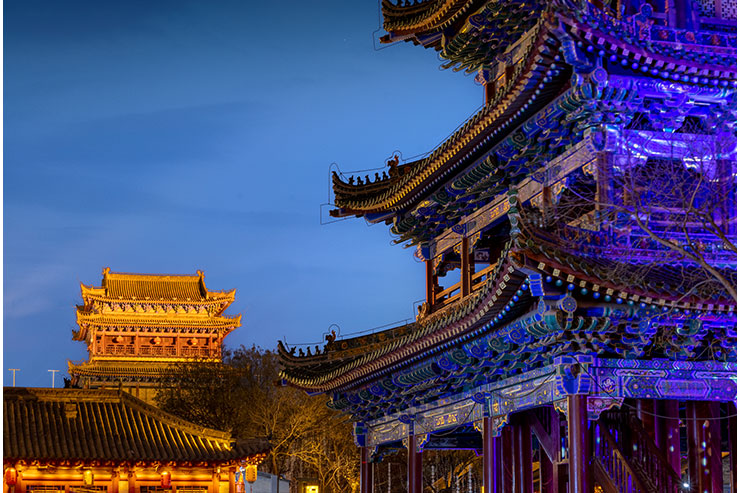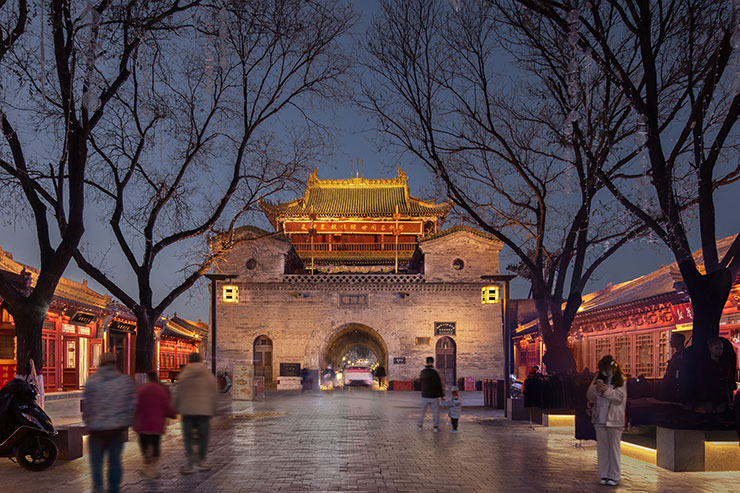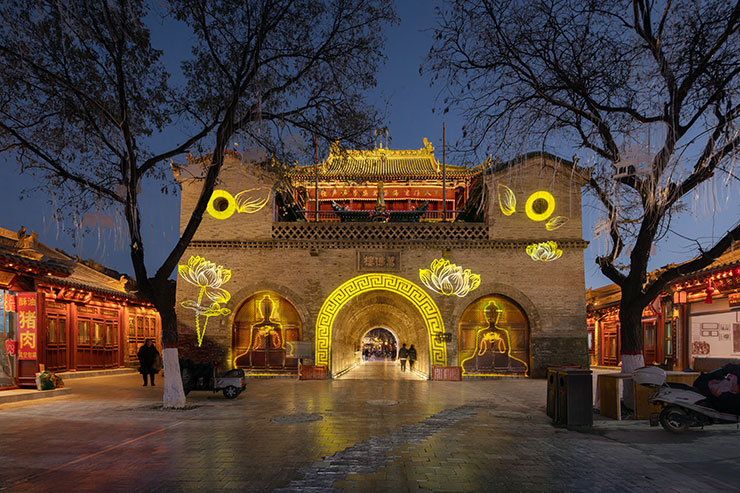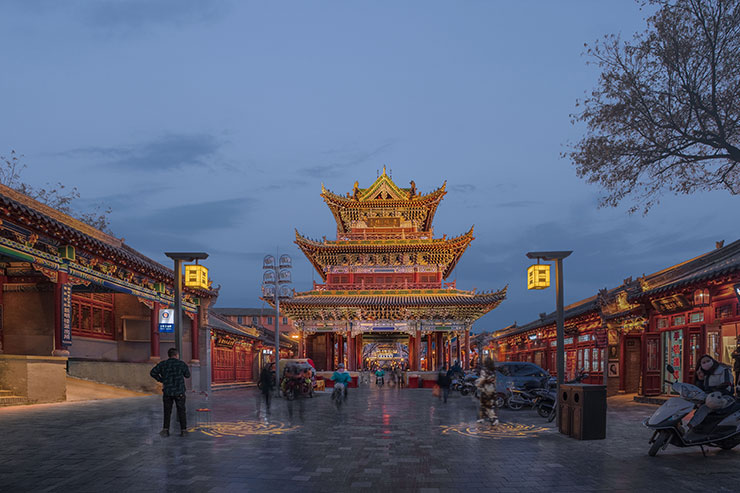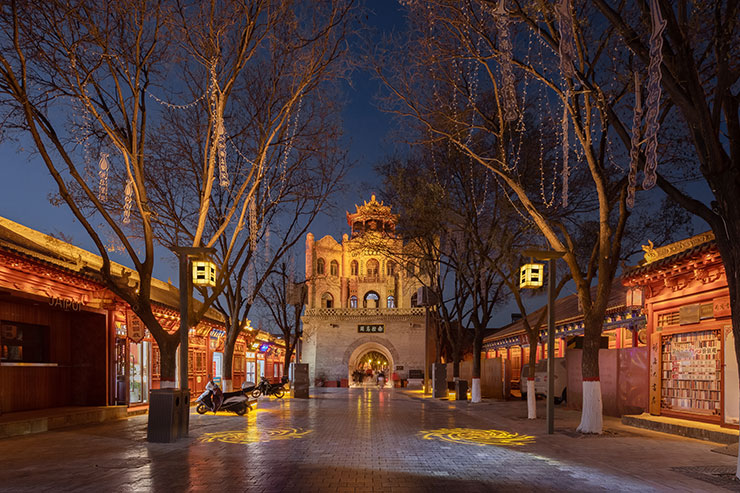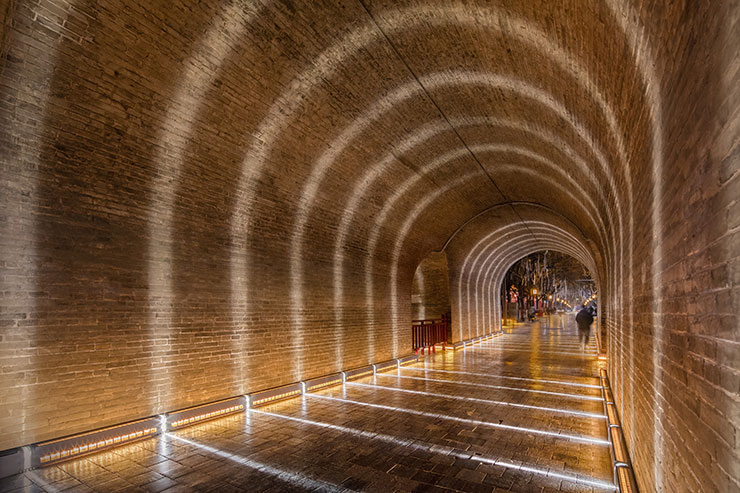This website uses cookies so that we can provide you with the best user experience possible. Cookie information is stored in your browser and performs functions such as recognising you when you return to our website and helping our team to understand which sections of the website you find most interesting and useful.
Yulin Ancient City (Phase I), China
ProjectYulin Ancient City (Phase I)LocationYulin City, ChinaLighting DesignBeijing Tsinghua Tongheng Planning and Design Institute, ChinaClientYulin Yuyang District Cultural Tourism Industry InvestmentLighting SuppliersFoshan Galaxy LightArt Lighting, Shanghai iGlow Tech, NEC
Yulin Street is a north-south longitudinal commercial street in the ancient city of Yulin, with seven historical landmarks evenly distributed on the street surface, forming a unique landscape spectacle. The lighting design takes the promotion of local culture as the main theme and service to the people as the core of the design. The lighting design is also based on the principles of prioritising the protection of historic buildings, highlighting local cultural characteristics, and supporting the innovative development of local industries. The lighting upgrade of the landmark Yulin Street will help Yulin develop into an important city with cultural influence.
The design starts from a macro perspective and creates an integrated spatial order at night. The overall low colour temperature of 2200K distinguishes the old and new buildings through different lighting methods. The historic buildings are mainly floodlit to express their historic simplicity. The use of lighting focuses on decorating the facades on both sides of the shops to create a commercial atmosphere. In developing the overall brightness of the ancient city, a number of similar ancient city brightness data was collected as a reference, through a large number of research and data analysis, and finally set the project landmark brightness of 15cd / ㎡. Second, from the bird’s eye view, pedestrian perspective, architectural significance and other conditions of comprehensive assessment, the buildings are classified and set the brightness ratio, to establish an orderly spatial order of light and dark. This way of formulating luminance data effectively reduced the investment cost by 28%.
The project is designed on the principle of low carbon and sustainable development. Through the application of the control system, it assists the owner in real-time remote control. It also sets appropriate scene modes according to different festivals and people flow to achieve the purpose of energy saving and consumption reduction.
One of the biggest challenges faced by the designers was the fact that the heritage buildings could not be lit due to China’s heritage conservation policy. Through extensive communication and coordination on site, the designers decided to use remote lighting for the heritage buildings. And to ensure there were no security risks, the poles were installed in hidden locations. To make the lighting of the ancient buildings more hierarchical, the shape and colour of the spotlight was customised to match the ancient structure and appearance of the material.Considering the difficulty of the project and the tight construction schedule, in-house developed lighting simulation software was used during the project to simulate the projection position of the luminaires and accurately locate the light to a specific position in the ancient building. This greatly reduced the need for repeated on-site calibration. The software set luminaires and lanterns arrangement, deepen the design, luminaires selection in one, can real-time view of the real lighting effect. Software to determine the luminaires selection and projection angle can directly guide the construction installation, commissioning. This approach greatly improves the design and construction efficiency.
The survey revealed that the street is approximately 2.3km long and the cross-section of the street is almost identical, resulting in a long and tiring walk for visitors. The design makes use of the north-south direction of the street and the different visual effects of the north and south elevations of the six landmark buildings to break up the tedium. Moving north, the north elevations of the landmark buildings are floodlit to show their historic simplicity. Moving south, the designers extracted characteristic patterns from each building culture and projected them onto the south facades of the buildings using projector luminaires to reinforce the historical and cultural propaganda. The road also suffers from inadequate functional lighting at night, which is a safety hazard. The functional lighting was customised with integrated light poles. The upper half of the pole illuminates the trees and complements the functional lighting at ground level by diffusing the light. The projection pattern on the lower half of the light pole incorporates elements of the four seasons characteristic of the region, representing the unique culture of Yulin.
To support the transformation of cultural tourism and create a “city of non-heritage” cultural IP that has become a popular attraction on social networks. The design selected two important ancient building nodes and used light shows to revive the regional culture and music of northern Shaanxi Province, awakening humanistic memories and stimulating contemporary urban vitality.
The lighting designers involved in this project are Guo Yin, Yang Guangpu, Cheng Chunxiao, Wen Lei, Yan Yunlei, Wang Kai, Gao Shuai, Chen Mingxin, Yang Qi, Li Zeyang.

